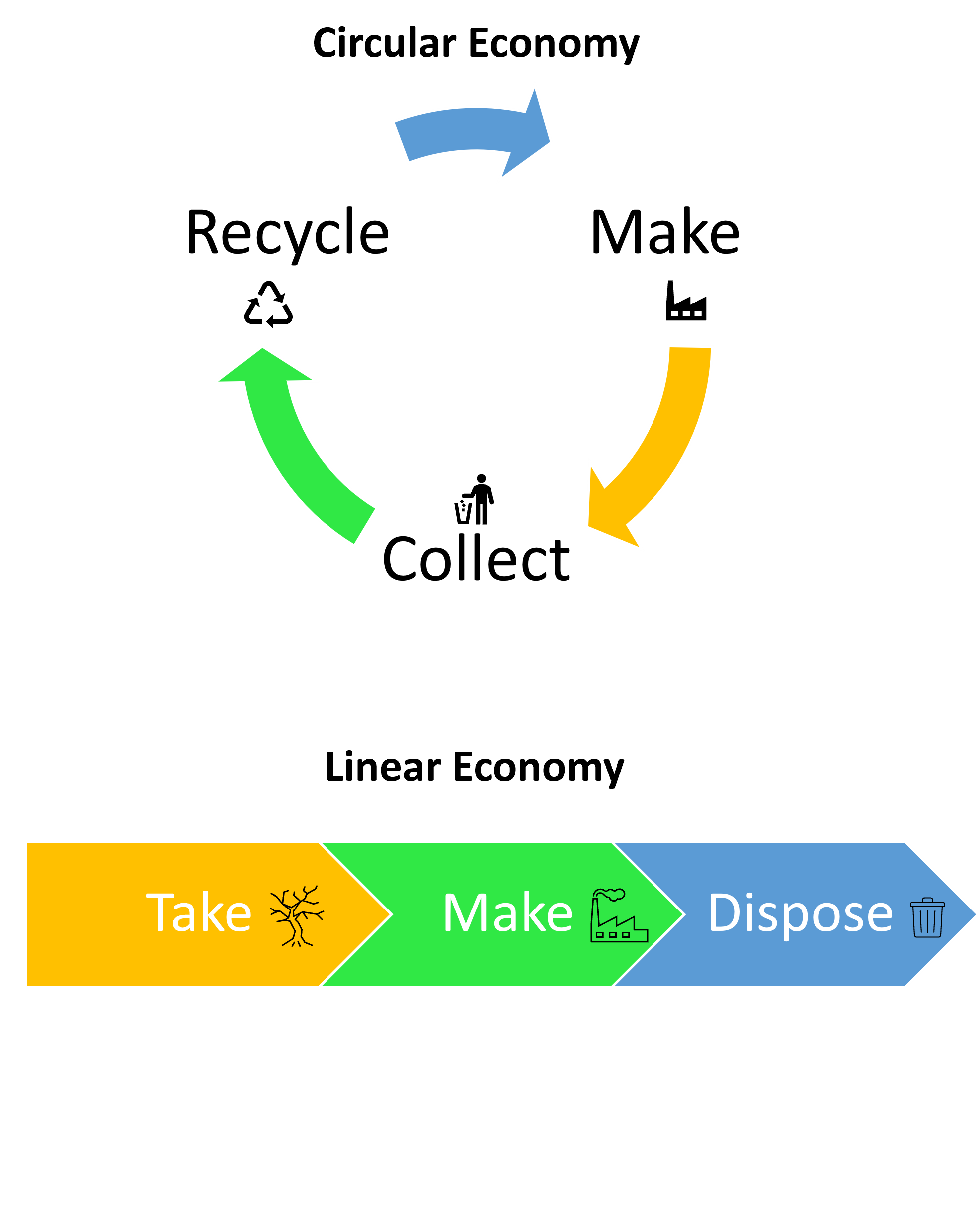Blog
Circular Economy: Definition and Benefits
- by: Verney - Sustaintable Shoes
- Sustentabilidade
Do you know how many tonnes of waste are produced only in the EU? Around 2.5 billion tonnes of waste are produced in the EU every year - an unimaginable number! For this very reason, the EU is trying to change its waste management legislation to promote the transition from a linear economy to a circular economy.
So, what is the circular economy?
The circular economy is a model of production and consumption based on the reduction, reuse, recovery and recycling of materials and energy. This more sustainable model aims to extend the life cycle of products and reduce waste.
Thus, in the circular economy, when a product reaches the end of its life cycle, its materials are kept in the economy to be used again.
This model is then opposed to the traditional linear economy model, whose principle is 'produce and throw away'. The products are created for a certain period of useful life to encourage consumers to buy again. This leads to a high demand for raw materials (some of which are scarce) and consequently energy consumption and CO2 emissions increase due to the extraction and use of these raw materials.

Circular Economy Advantages
The circular economy has many advantages, including:
- Promotion of ecology;
- Reducing annual greenhouse gas emissions;
- Reduction of pressure on the environment;
- Increased competitiveness;
- Promotion of innovation;
- Stimulating economic growth;
- Creating jobs;
- Production of more innovative and durable products.
As you can see, the circular economy focuses on the durability of products and materials in the economic cycle.
Also, its advantages cover different aspects, that is, the circular economy ends up being beneficial for both the environment, as it becomes a more sustainable model; it is more beneficial at an economic level; and, finally, it also has advantages for consumers, as they will have access to higher quality and more durable products.
So, we can say that the circular economy aims at the transition from a throwaway economy to a more circular economy. Also, the circular economy is based on three fundamental aspects: economy, society, and environment. In this sense, this model tries to respond to issues such as the preservation of resources, the environment and our health, industrial and economic development, and waste reduction.
In the EU the implementation of the circular economy has been one of the priorities. In 2020 the Commission adopted a new Action Plan for the Circular Economy, whose strategy is oriented towards the future, aiming to create a cleaner and more competitive Europe.
We believe that all together we can change and make a difference!
Subscribe to our Newsletter
Receive all our news and promotions!



